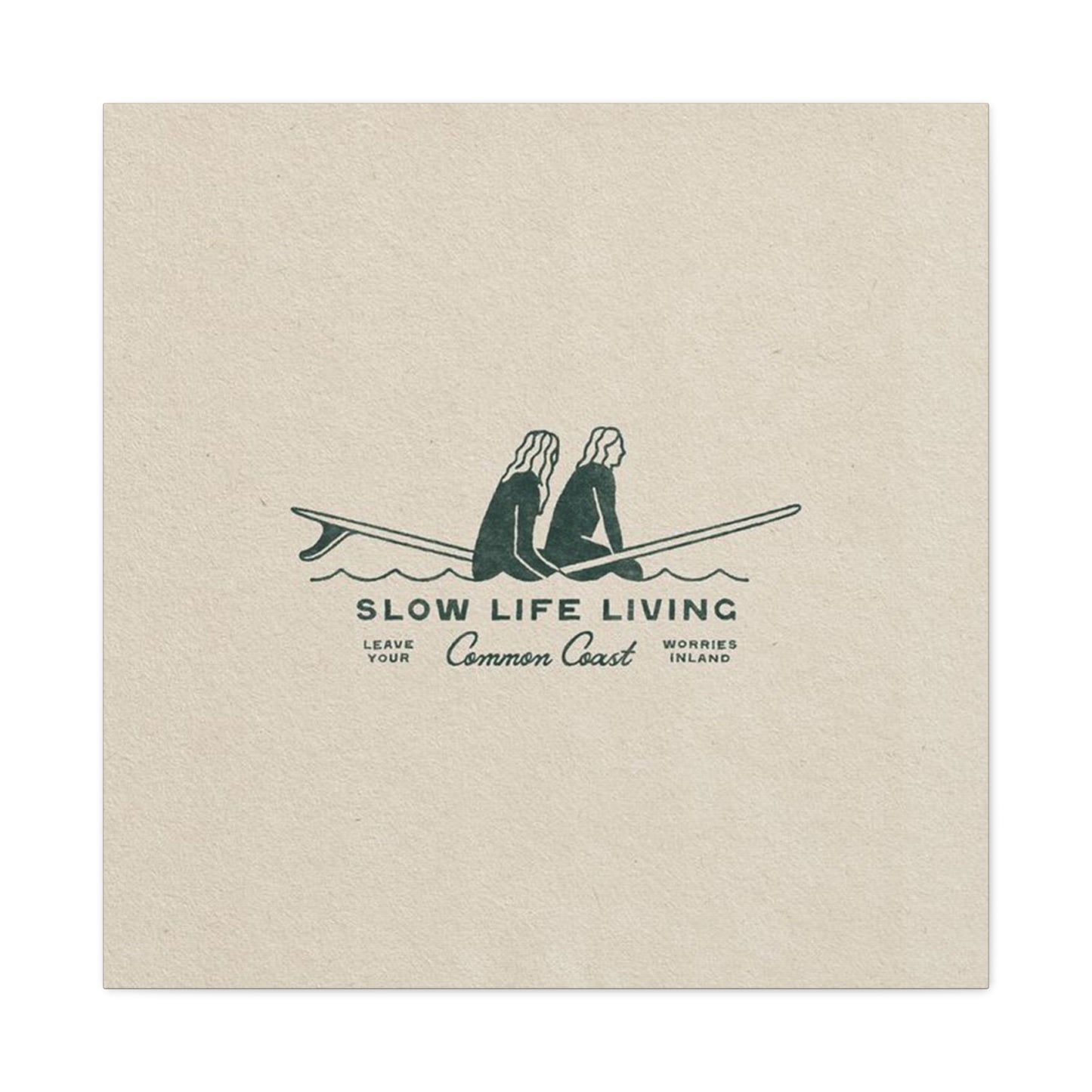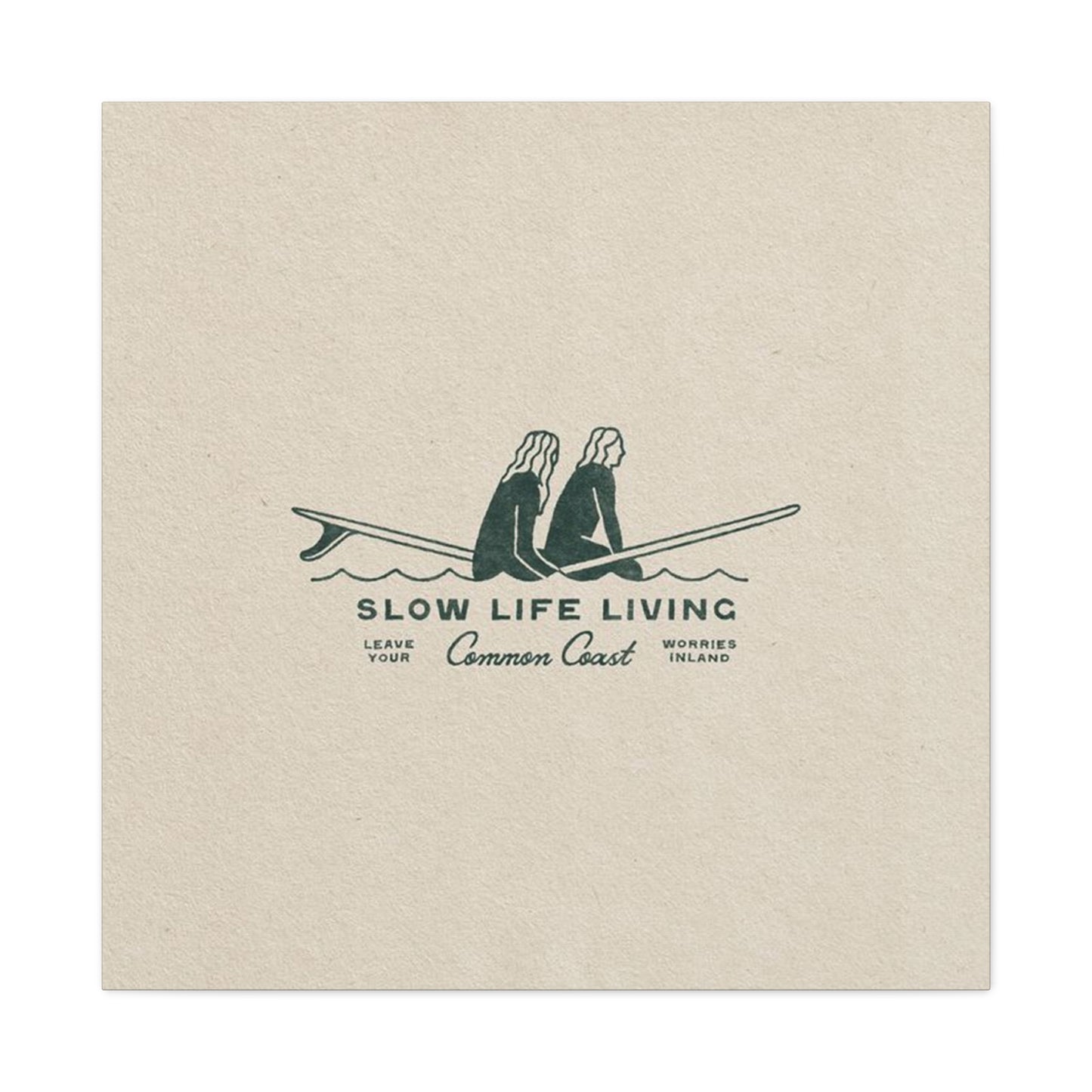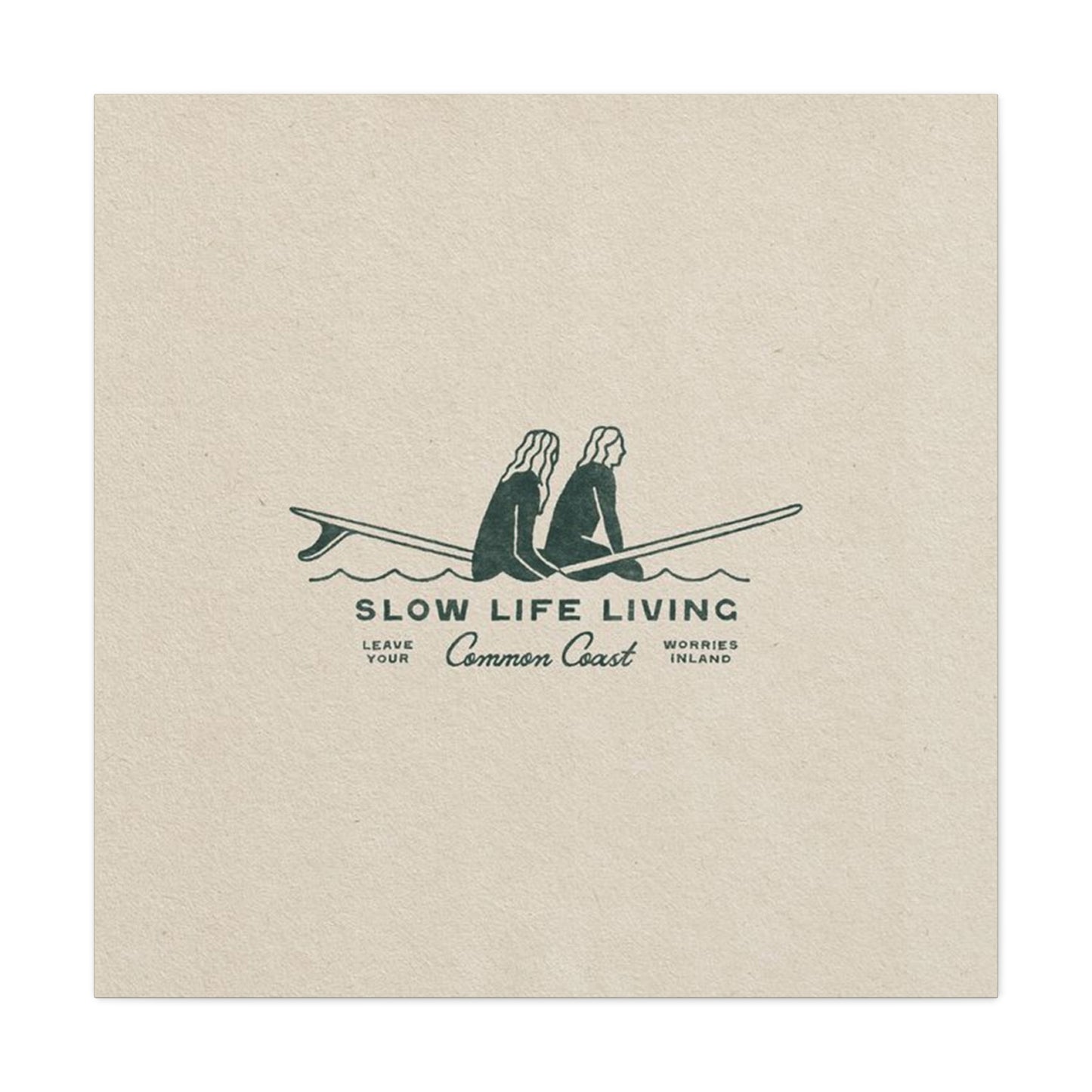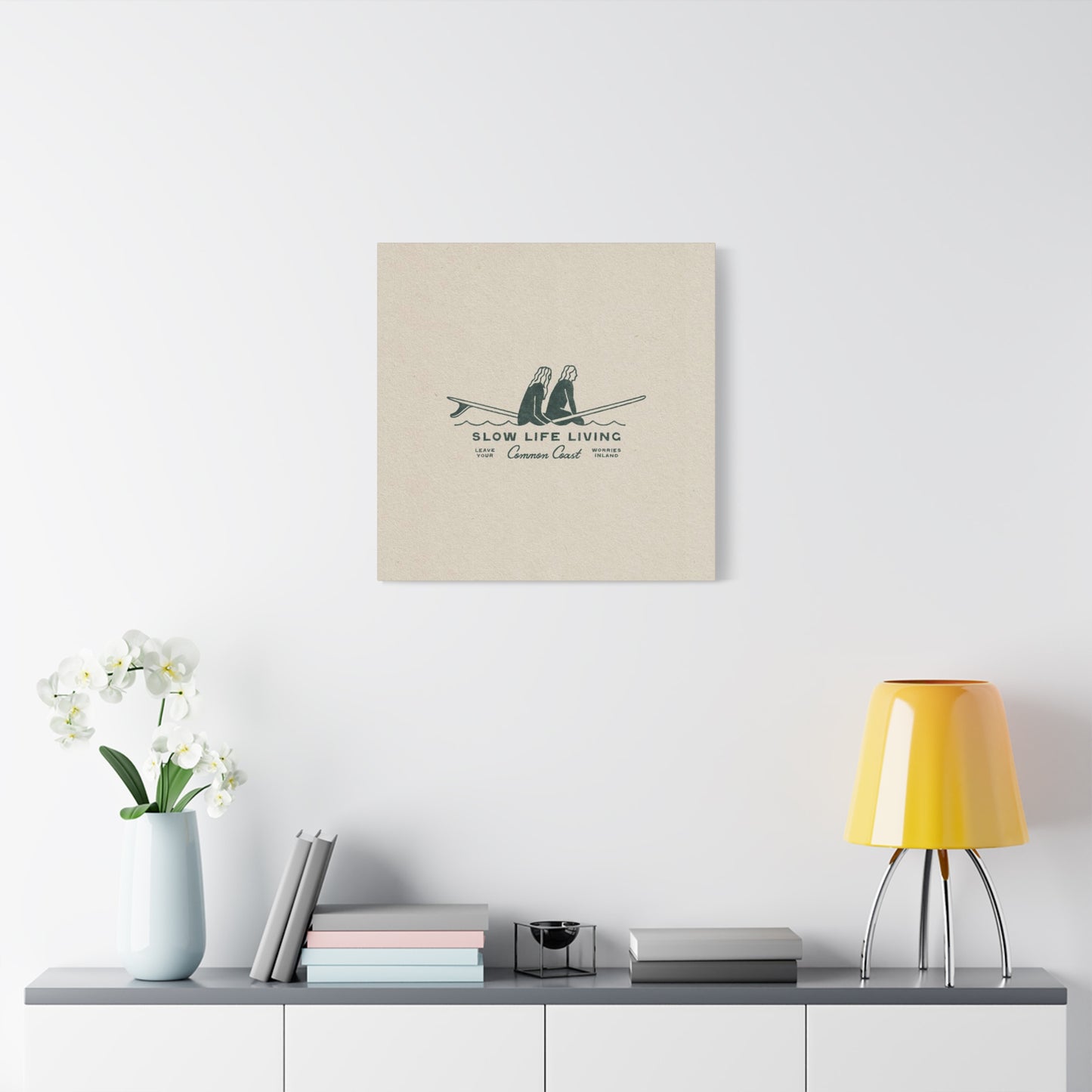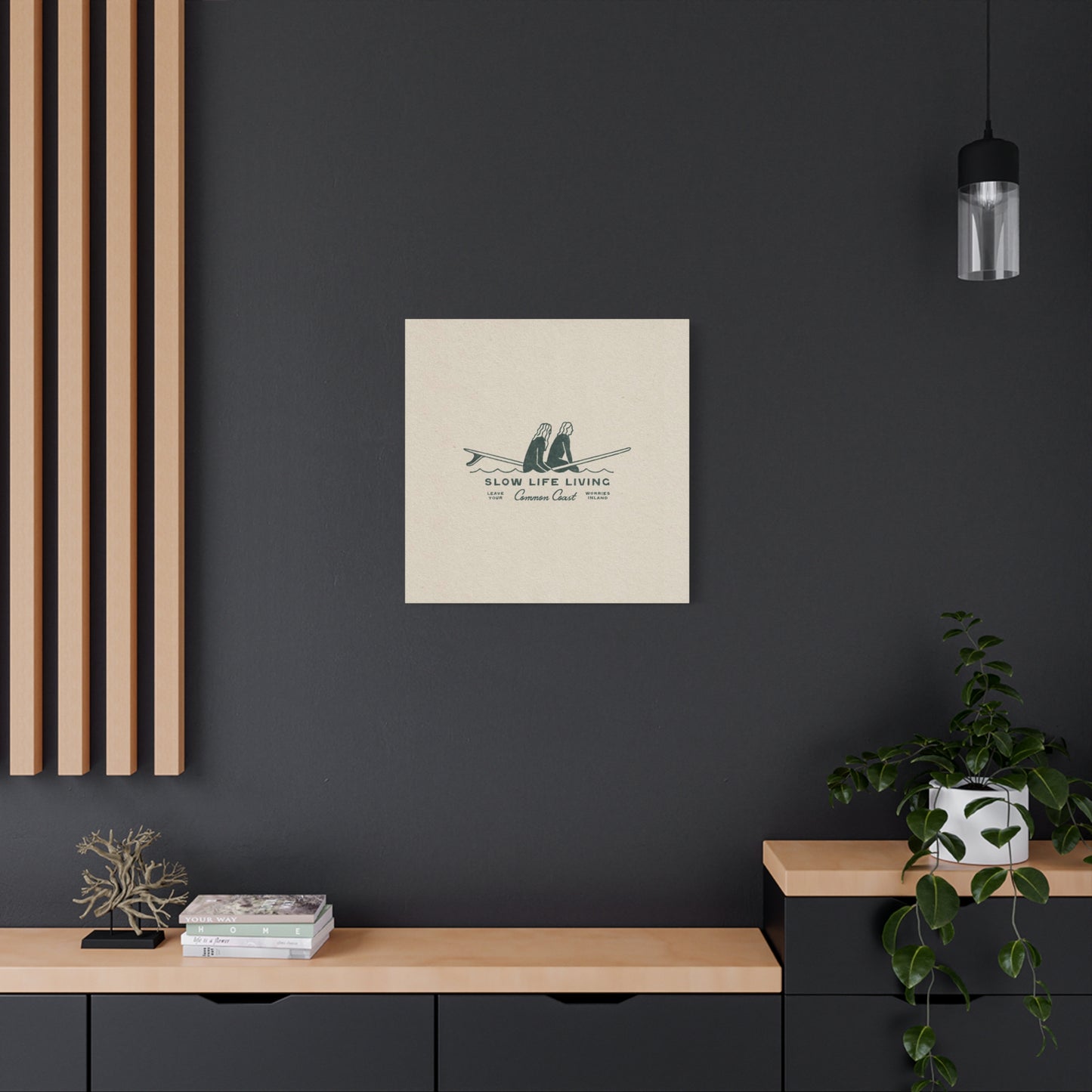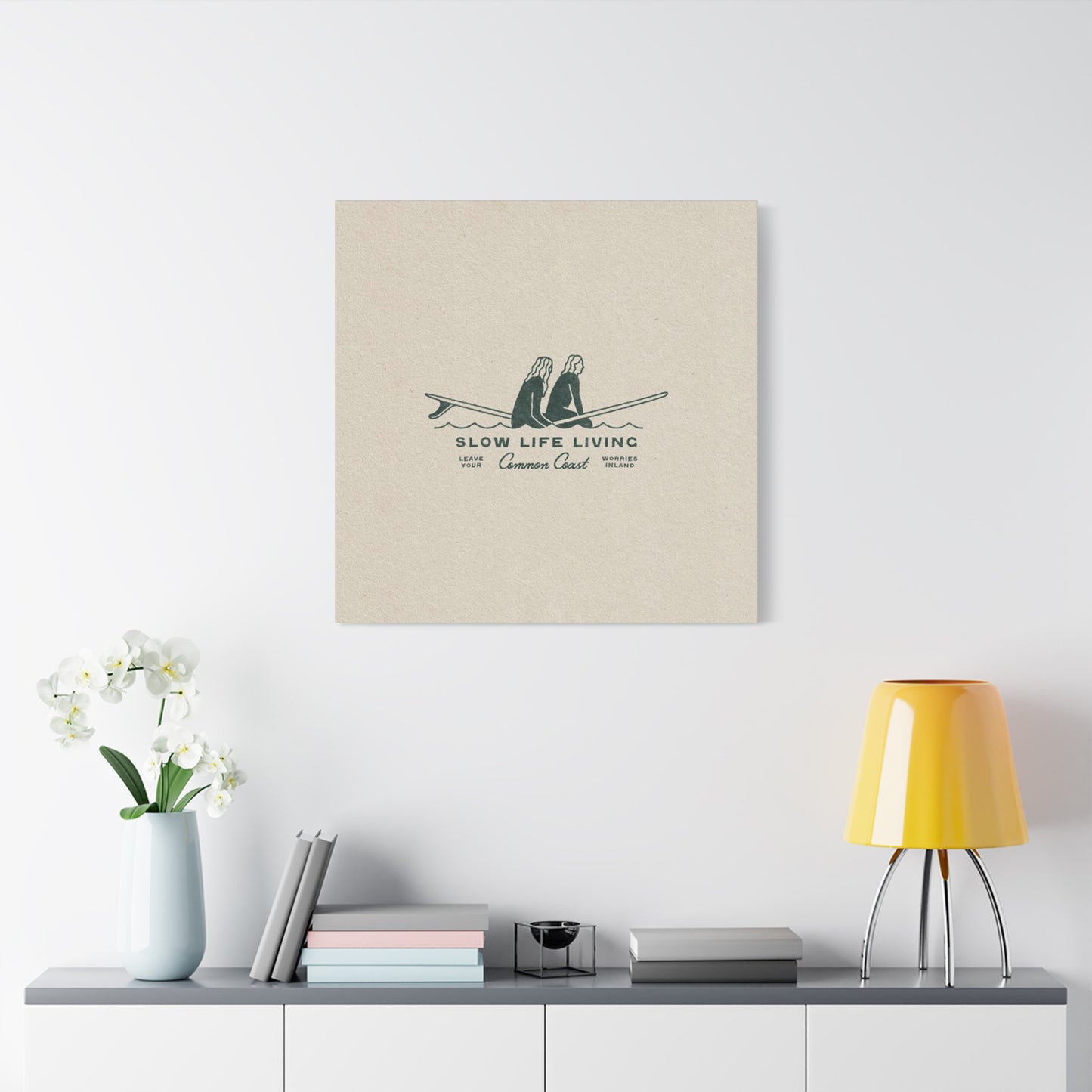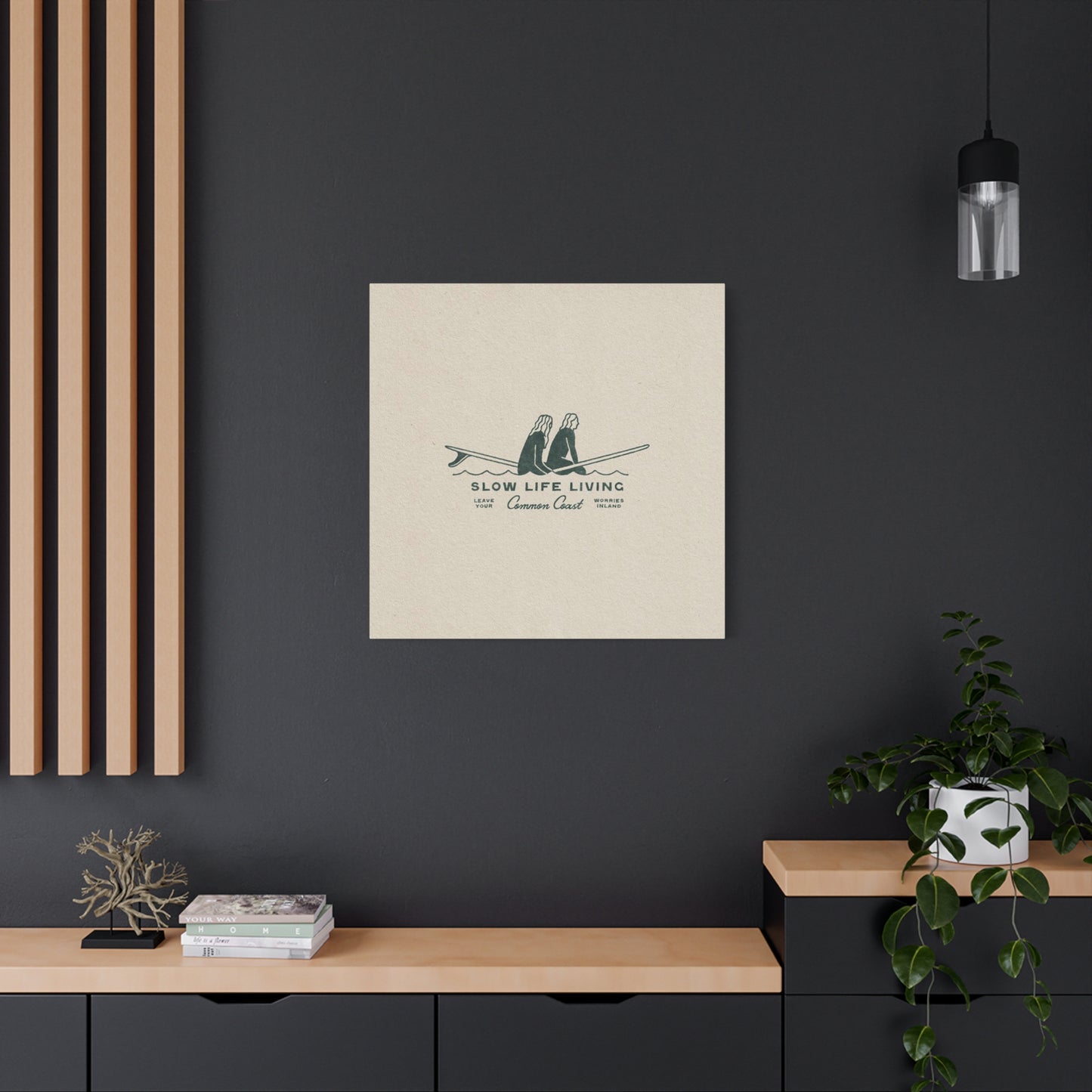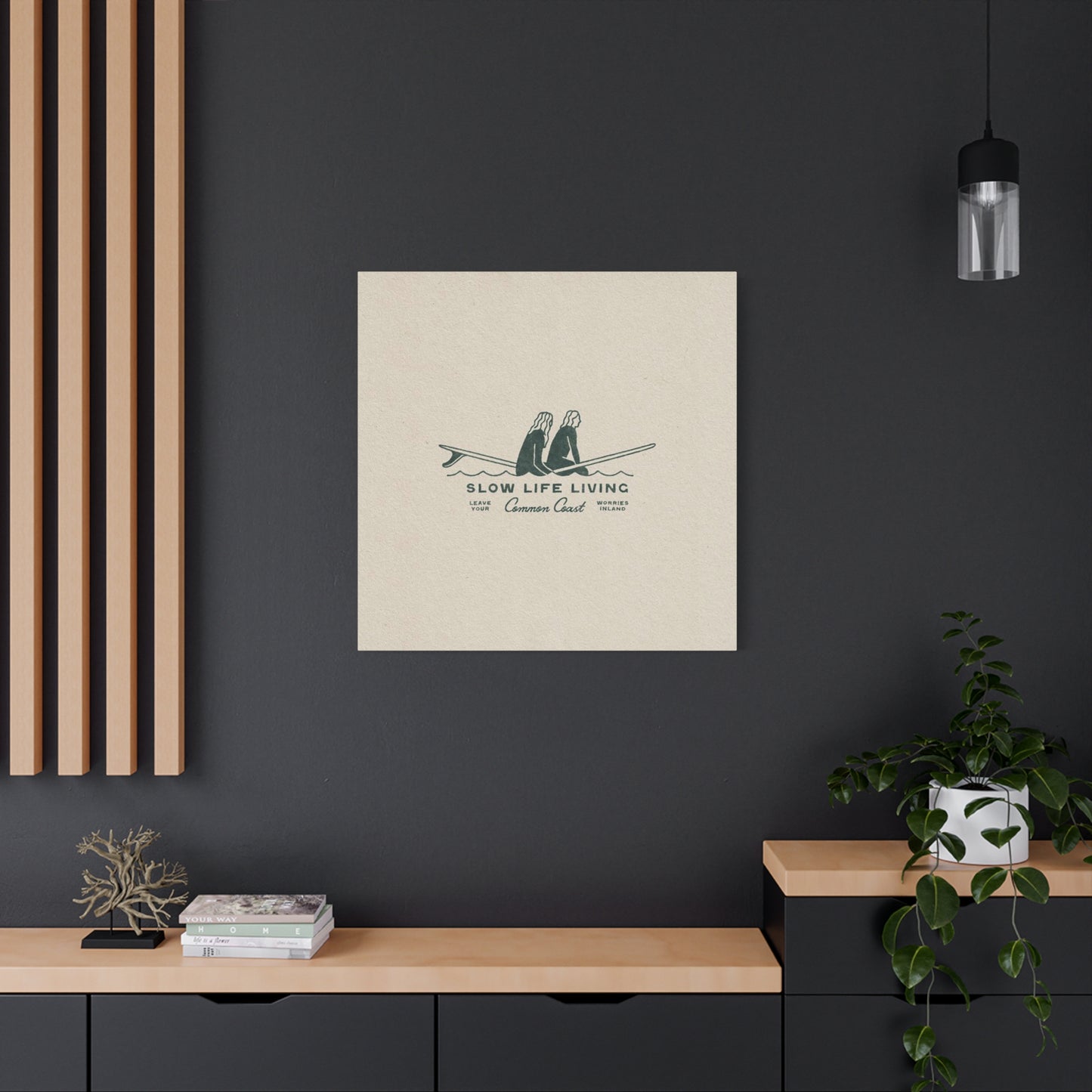Slow Living Wall Art: Embrace Simplicity and Harmony in Home Décor
In today's fast-paced world, creating a sanctuary within your home has become more important than ever. The concept of slow living represents a conscious choice to step back from the relentless rush of modern life and embrace moments of genuine peace and reflection. When this philosophy is translated into visual art, it transforms ordinary walls into gateways of tranquility, offering daily reminders to pause, breathe, and appreciate the beauty in simplicity.
The art that adorns our living spaces does far more than fill empty walls. It shapes our emotions, influences our state of mind, and creates the atmosphere in which we live our daily lives. Canvas prints that celebrate slow living bring an intentional sense of calm into our homes, turning them into havens where we can truly unwind and reconnect with ourselves. These artistic pieces serve as visual anchors, grounding us in the present moment and encouraging us to slow down amidst the chaos of contemporary existence.
This comprehensive exploration delves into the world of canvas art designed to embody the principles of mindful, peaceful living. From understanding the psychological impact of serene imagery to discovering how to select and display pieces that resonate with your personal journey toward a more intentional lifestyle, this guide offers everything you need to transform your home into a reflection of calm, cozy, and contemplative living.
Mindful Moments Wall Art
Creating spaces that encourage mindfulness begins with the visual elements we choose to surround ourselves with. Mindful moments wall art captures those fleeting instances of perfect peace that often slip by unnoticed in our busy lives. These artistic representations serve as gentle reminders to pause and fully experience the present, transforming ordinary rooms into meditation spaces that nurture mental clarity and emotional balance.
The essence of mindful moments in canvas art lies in its ability to freeze time, presenting scenes that invite prolonged contemplation. A single dewdrop clinging to a leaf, the gentle ripple of water across a still pond, or the soft morning light filtering through delicate curtains are all subjects that encourage viewers to slow their racing thoughts and simply be. These images work on a subconscious level, triggering a relaxation response that can lower stress hormones and promote a sense of wellbeing.
When selecting mindful moments wall art for your space, consider pieces that feature natural elements in states of rest or gentle motion. The psychological impact of viewing such imagery has been extensively studied, with research consistently showing that exposure to peaceful natural scenes can reduce anxiety, lower blood pressure, and improve overall mood. A canvas depicting a quiet forest path dappled with sunlight or a serene beach at dawn can serve as a visual vacation, offering mental escape without leaving your living room.
The color palette of mindful moments wall art typically embraces softer, muted tones that promote relaxation rather than stimulation. Gentle blues reminiscent of clear skies, warm earth tones that ground and center, and soft greens that echo the calming presence of nature all contribute to creating an atmosphere conducive to mindfulness. These colors work harmoniously to reduce visual noise and create a sense of spaciousness, even in smaller rooms.
Composition plays an equally important role in mindful wall art. Pieces that incorporate negative space, where significant portions of the canvas remain uncluttered, mirror the mental clarity that mindfulness practice seeks to achieve. This artistic approach prevents visual overwhelm and allows the eye to rest, much like meditation allows the mind to settle. The balance between elements and emptiness in these artworks teaches a valuable lesson about the beauty of simplicity and the power of what is left unsaid.
Texture adds another dimension to mindful moments captured on canvas. Even though the medium is two-dimensional, quality canvas prints can convey the roughness of tree bark, the smoothness of river stones, or the delicate softness of flower petals. These tactile suggestions engage our sensory imagination, deepening our connection to the artwork and enhancing its meditative qualities.
The placement of mindful moments wall art within your home significantly influences its effectiveness. Consider positioning such pieces in spaces where you naturally pause during your day. A meditation corner, the wall facing your bed where your eyes first land upon waking, or a quiet reading nook all serve as ideal locations. These strategic placements ensure that the art serves its purpose, catching your attention during moments when you're most receptive to its calming influence.
Lighting considerations can dramatically enhance the impact of mindful wall art. Natural light that changes throughout the day adds a dynamic quality to static images, while softer artificial lighting in the evening can create an entirely different mood. Some enthusiasts of slow living even coordinate their lighting choices specifically to complement their canvas art, using warm-toned bulbs that enhance the cozy, contemplative atmosphere these pieces are meant to inspire.
The size of your mindful moments wall art should correspond to both the physical dimensions of your space and the emotional impact you wish to achieve. A large-scale piece can serve as a focal point that dominates a room, making a bold statement about your commitment to peaceful living. Conversely, a collection of smaller canvases arranged thoughtfully can create a gallery effect that invites closer inspection and prolonged engagement, much like a series of meditation prompts.
Authenticity matters when selecting mindful wall art. Pieces that genuinely resonate with your personal journey toward slower, more intentional living will have far greater impact than those chosen simply for their aesthetic appeal. Take time to sit with potential selections, noticing how they make you feel and whether they align with the specific aspects of mindfulness you're seeking to cultivate in your home environment.
Tranquil Scenes for Home Décor
Tranquil scenes transported onto canvas bring the peace of undisturbed natural environments directly into your living space. These carefully curated images of serene landscapes, quiet moments in nature, and harmonious compositions work to counterbalance the stimulation and stress of daily life. The transformative power of tranquil scene wall décor lies in its ability to create visual breathing room, offering eyes and mind a place to rest and rejuvenate.
The psychological principle behind tranquil scene artwork relates to what environmental psychologists call attention restoration theory. This concept suggests that viewing scenes of nature, particularly those characterized by peacefulness rather than drama, allows our directed attention mechanisms to rest and recover. Unlike the constant demands of urban environments and digital screens, tranquil natural scenes make no cognitive demands, allowing mental fatigue to dissipate naturally.
Classic tranquil scenes include misty mountains at dawn, meadows bathed in golden afternoon light, quiet lakesides reflecting cloudy skies, and ancient forests where time seems to move differently. Each of these settings carries its own particular quality of peace. Mountain scenes often evoke feelings of majesty and perspective, reminding viewers of the vastness of the natural world and the relative smallness of daily concerns. Meadow and field scenes suggest openness and possibility, creating mental space for new thoughts and ideas to emerge.
Water features prominently in many tranquil scene canvases, and for good reason. The presence of water in artwork has been shown to trigger physiological relaxation responses, likely due to evolutionary associations between water and survival, safety, and sustenance. Whether depicted as the mirror-like surface of a mountain lake, the gentle flow of a forest stream, or the rhythmic advance and retreat of ocean waves on a deserted beach, water imagery brings a sense of flow and continuity that many find deeply soothing.
The seasons captured in tranquil scene wall art offer different flavors of peace. Spring scenes with delicate blossoms and fresh green growth speak to renewal and gentle awakening. Summer landscapes filled with lush fullness and warm light create feelings of abundance and contentment. Autumn imagery with its rich, warm color palette and suggestion of graceful transition appeals to those who find beauty in change. Winter scenes, often rendered in soft whites and cool blues, offer the deepest quiet, suggesting rest, reflection, and the peace that comes from stillness.
When incorporating tranquil scenes into your home décor, consider the existing energy of each space. Rooms that naturally receive a lot of activity might benefit from particularly peaceful imagery to create balance, while already quiet spaces can be enhanced with scenes that deepen their contemplative quality. The bedroom, for instance, becomes an even more effective sanctuary when adorned with canvas art depicting twilight scenes, starry skies, or the gentle mist of early morning.
The frame and presentation of tranquil scene canvas art should enhance rather than compete with the peaceful imagery. Simple frames in natural wood tones or clean white finishes tend to work best, allowing the artwork itself to remain the focus. Some enthusiasts of minimalist aesthetics prefer frameless canvas wraps where the image extends around the edges, creating a floating effect that adds to the sense of spaciousness and calm.
Artistic style significantly influences how tranquil scenes impact viewers. Photorealistic renderings offer a window-like quality that can make small rooms feel more expansive and connected to the outdoors. Impressionistic approaches with their softer edges and emphasis on light and color over precise detail often feel dreamlike and meditative. Abstract interpretations of tranquil scenes can be equally effective, using color, form, and composition to evoke feelings of peace without literal representation.
The cultural context of tranquil scenes adds layers of meaning and personal connection. Japanese-inspired artwork featuring zen gardens, bamboo forests, or traditional countryside landscapes carries centuries of contemplative tradition. Scandinavian scenes with their characteristic light, space, and connection to nature embody the concept of hygge and cozy contentment. Mediterranean vistas with their warm light and ancient olive groves suggest timeless peace and the beauty of weathered endurance.
Layering tranquil scene canvas art with other décor elements amplifies its impact. Positioning plants near nature-themed artwork creates a dialogue between real and represented nature, strengthening the connection to the natural world. Incorporating natural materials like stone, wood, and linen in nearby furniture and accessories creates a cohesive environment where every element supports the atmosphere of tranquility you're working to achieve.
Calm and Cozy Canvas Prints
The intersection of calm and cozy represents a particularly appealing aesthetic in home décor, combining the peace of mind that comes from tranquility with the physical comfort and emotional warmth of a truly welcoming space. Canvas prints that embody both qualities create environments where relaxation comes naturally, where it feels safe to let down your guard and simply exist without performance or pretense.
Calm and cozy canvas art often features intimate scenes rather than grand vistas. A steaming cup of tea on a windowsill overlooking a rainy garden, a well-worn book resting on a knitted blanket, or a cozy reading nook bathed in warm lamplight all exemplify this aesthetic. These images celebrate the small pleasures of domestic life, elevating everyday moments into art-worthy subjects and reminding viewers that happiness and contentment often reside in simple experiences.
Color temperature plays a crucial role in achieving the calm and cozy effect. Warm tones ranging from soft creams and buttery yellows to rich tans and muted oranges create the cozy component, triggering associations with firelight, sunrise, autumn afternoons, and other comforting experiences. These are balanced with cooler, calming elements like soft grays, gentle blues, and muted greens that prevent the warmth from becoming overstimulating, maintaining the essential quality of calm.
Texture representation in calm and cozy canvas prints adds to their appeal. The visual suggestion of soft, touchable surfaces invites emotional response. Artwork depicting chunky knit blankets, smooth worn wood, fluffy pillows, or soft candlelight creates a multisensory experience even though the canvas itself remains flat. Our brains fill in the tactile information, creating a fuller, more engaging experience that deepens the artwork's emotional impact.
The hygge movement from Scandinavia has significantly influenced calm and cozy canvas art trends. This Danish concept, which roughly translates to cozy contentment, celebrates creating warm atmospheres, enjoying life's simple pleasures, and finding beauty in everyday moments. Canvas prints inspired by hygge often feature candles, comfortable textiles, natural materials, warm beverages, and intimate indoor spaces that shield inhabitants from harsh weather while providing comfort and connection.
Seasonal variations of calm and cozy canvas prints allow you to rotate artwork throughout the year, keeping your space fresh while maintaining the core atmosphere. Autumn and winter pieces might emphasize indoor coziness with fireplaces, warm blankets, and the contrast between cold weather outside and comfort within. Spring and summer interpretations might focus on outdoor comfort like hammocks in dappled shade, picnic scenes, or the cozy feeling of a sun-warmed porch.
The scale and composition of calm and cozy canvas art often feels more intimate than dramatic. Rather than sweeping panoramas, these pieces invite viewers into small, contained spaces that feel achievable and relatable. This accessibility is part of their appeal; unlike aspirational décor that might feel distant from daily life, calm and cozy art celebrates the beauty already present or easily created in ordinary homes.
Incorporating text elements can enhance calm and cozy canvas prints when done thoughtfully. Gentle reminders like simple words or phrases that embody slow living principles can add meaning without overwhelming the visual composition. The key is subtlety; text should integrate seamlessly with the imagery rather than dominating it, maintaining the peaceful, uncluttered feeling essential to both calm and cozy aesthetics.
The psychological comfort provided by calm and cozy canvas art relates to concepts of nest-building and creating personal sanctuaries. In uncertain times or stressful life periods, these visual representations of safety, warmth, and comfort can provide significant emotional support. They serve as reminders that home is meant to be a refuge, a place where the outside world's demands fade away and personal wellbeing takes priority.
Pairing calm and cozy canvas prints with complementary lighting choices multiplies their effectiveness. Warm LED bulbs, salt lamps, string lights, or candles create real-world ambiance that echoes the cozy atmosphere depicted in the artwork. This coordination between art and environment creates an immersive experience where the boundary between representation and reality pleasantly blurs.
Personal photographs printed on canvas can serve as wonderfully effective calm and cozy art when they capture meaningful moments of comfort and connection. A image of a beloved pet napping in a sunbeam, family gathered around a table, or your own garden in full bloom brings the additional layer of personal history and emotional connection that makes commercial art pale in comparison for some individuals.
Slow Life Inspiration for Interiors
Designing interiors that support and inspire slow living requires thoughtful curation of every element, with wall art serving as both reflection of and catalyst for this intentional lifestyle. Slow life inspiration canvas prints go beyond mere decoration, functioning as daily reminders of values, priorities, and the kind of life you're actively choosing to create. These pieces help anchor your commitment to living more deliberately, even when external pressures push toward rush and overwhelm.
The slow living movement emerged as a counter-response to the acceleration of modern life, encouraging people to prioritize quality over quantity, presence over productivity, and being over doing. Canvas art that embodies these principles often features subjects that themselves cannot be rushed: the growth of plants, the changing of seasons, the patient work of traditional craftspeople, or the timeless rhythms of nature. These images serve as visual philosophy, communicating values without words.
Agricultural and pastoral scenes hold particular significance in slow life inspiration art. Images of vegetable gardens, orchards heavy with fruit, fields being tended by hand, or farm animals grazing peacefully all connect to the origins of the slow living movement in slow food philosophy. These scenes remind viewers of the natural pace at which nourishment grows, the seasons that cannot be hurried, and the satisfaction that comes from participating in rather than simply consuming from these processes.
Artisan and craft imagery similarly inspires slow living by celebrating the time, skill, and attention required to create handmade objects. Canvas prints featuring pottery being thrown, bread being kneaded, textiles being woven, or woodworking in progress all honor the value of craftsmanship and the meditative quality of working with one's hands. In a world of mass production and instant gratification, these images propose an alternative set of values centered on quality, sustainability, and the intrinsic worth of the creative process.
Seasonal progression depicted through canvas art helps maintain connection with natural cycles that modern life often obscures. A series of prints showing the same landscape or tree through spring, summer, autumn, and winter serves as a powerful reminder that change follows patterns, that different seasons bring different gifts, and that not all times are meant for the same activities. This awareness can help release the pressure to be equally productive year-round, instead embracing natural rhythms of activity and rest.
Slow life inspiration for interiors often includes imagery of traditional homes and living spaces from cultures that maintain stronger connections to slower-paced lifestyles. Rustic European cottages, Japanese country homes, Mediterranean villas, or Scandinavian cabins all represent architectural approaches that prioritize livability, connection to environment, and human scale over ostentation or excess. These images can inspire not just aesthetic choices but deeper questions about what makes a house a home.
The concept of wabi-sabi, the Japanese worldview that finds beauty in imperfection, impermanence, and incompleteness, significantly influences slow life canvas art. Pieces that embrace this philosophy might feature weathered wood, patinated metal, aged pottery, or natural objects showing the marks of time. Rather than the glossy perfection demanded by much commercial imagery, these artworks celebrate authenticity, age, and the unique character that develops through use and time.
Canvas prints depicting solitary moments support the slow living emphasis on solitude and self-reflection. A single figure walking a quiet path, an empty chair on a porch, a lone tree in a field, or a canoe resting on still water all suggest the value of time spent alone, disconnected from constant social demands and digital connectivity. These images provide permission and encouragement for the viewer to seek similar moments in their own life.
Mindful eating imagery forms another category of slow life inspiration art. Thoughtfully composed still lifes of fresh ingredients, simple meals beautifully plated, or the process of cooking with care all celebrate food as something to be savored rather than merely consumed. These pieces can transform dining areas into spaces that encourage the kind of present, appreciative eating that lies at the heart of both slow food and broader slow living movements.
Heritage and tradition-focused canvas art connects slow living to continuity with the past. Images of old tools still in use, traditional festivals, time-honored practices, or generational gatherings all emphasize that valuable wisdom comes from those who lived before our accelerated age. These pieces can prompt reflection on which traditions and practices are worth preserving or reviving in your own life as anchors against the tide of constant change.
The integration of slow life inspiration canvas prints throughout your home creates multiple touchpoints with these values throughout your day. A piece in the entryway that reminds you to leave work concerns at the door, kitchen art that celebrates nourishing yourself and others, bedroom pieces that honor rest and restoration—each placement serves as a gentle guide toward more intentional living.
Peaceful Living Captured in Art
Peaceful living as an art subject captures more than visual tranquility; it represents a complete lifestyle philosophy translated into image form. This category of canvas art depicts not just peaceful scenes but the practices, spaces, and moments that constitute a life built around inner peace and harmony with one's environment. These artworks serve as aspirational reminders of the kind of daily existence that becomes possible when peace becomes a priority.
Meditation and yoga practice imagery represents one approach to capturing peaceful living in art form. Canvas prints showing figures in meditation postures, practicing yoga in serene settings, or simply sitting in quiet contemplation communicate the central role these practices can play in cultivating lasting inner peace. The stillness and centeredness visible in such images can have a calming effect on viewers, sometimes inspiring them to begin or deepen their own mindfulness practices.
Harmonious living spaces depicted in canvas art show how environment shapes experience. Carefully composed images of rooms where every element serves a purpose, where clutter gives way to careful curation, and where natural light and natural materials create sanctuaries of peace provide visual models for viewers' own spaces. These artworks function almost as interior design guides, demonstrating principles of peaceful living through example rather than instruction.
Connection to nature remains central to most depictions of peaceful living in canvas art. Images showing morning rituals on a balcony surrounded by plants, outdoor bathing under stars, walking barefoot through grass, or tending a garden all emphasize the peace that comes from regular interaction with the natural world. For those who live in urban environments with limited access to nature, such artwork serves as a vital reminder of this connection and potentially motivates efforts to incorporate more natural elements into daily life.
Community and connection balanced with solitude appear in peaceful living art that shows gatherings characterized by quality rather than quantity. Small groups sharing meals, families engaged in simple activities together, or neighbors helping one another all depict the kind of meaningful connection that supports rather than depletes. These images counter the isolation that can paradoxically result from our hyper-connected digital age, proposing instead intentional, present relationships.
Slow morning routines have become iconic imagery in peaceful living canvas art. Scenes of someone slowly sipping coffee while watching sunrise, journaling in bed, or simply sitting by a window observing the day begin all celebrate taking time for yourself before engaging with the world's demands. These images particularly resonate with those who struggle with rushing from the moment they wake, offering a visual reminder that mornings can be peaceful transitions rather than frantic launches.
Reading as a peaceful living practice appears frequently in this art category. Whether showing cozy reading nooks, books stacked beside comfortable chairs, or people lost in literature in beautiful settings, these images honor the kind of deep engagement and mental quiet that sustained reading provides. In an age of fractured attention and constant content consumption, such artwork makes a statement about valuing depth, focus, and imagination.
Creative pursuits as paths to peaceful living feature in canvas art showing painting, writing, music-making, or crafting in tranquil settings. These images communicate that creativity serves as both expression and meditation, a means of accessing flow states where time disappears and peace emerges naturally. The message is clear: peaceful living isn't passive but involves active engagement in activities that bring joy and meaning.
Minimal possession and simplified surroundings appear in peaceful living art that shows beauty in emptiness and restraint. Rooms with few but carefully chosen items, outdoor spaces left intentionally wild rather than manicured, or lifestyles that fit in small, simple dwellings all reflect the peace that can come from releasing attachment to material accumulation. These images appeal to those drawn to minimalism not as aesthetic trend but as spiritual practice.
Elderly subjects in peaceful living canvas art bring a dimension of wisdom and perspective. Images showing older individuals engaged in quiet activities, tending gardens they've cultivated for decades, or simply resting with evident contentment suggest that peaceful living is both cause and result of life lived well. These pieces can provide young viewers with visual mentors, examples of the kind of peace that comes from a lifetime of intentional choices.
The authenticity visible in peaceful living art matters deeply. Staged perfection rings false and fails to inspire, while images that capture genuine moments of peace in real, lived-in spaces create connection and possibility. The most effective pieces in this category feel like windows into actual lives rather than advertisements for an impossible ideal, making peaceful living seem attainable rather than aspirational.
Relaxed Lifestyle Wall Prints
Relaxed lifestyle wall prints celebrate the art of taking life at a comfortable pace, embracing leisure without guilt, and finding contentment in unhurried days. This art category speaks to those seeking to shed the constant pressure of productivity and achievement in favor of simply being. Unlike tranquil scene art that emphasizes environment, relaxed lifestyle prints focus on the activities, attitudes, and moments that characterize a life lived without unnecessary rush.
Leisure activities depicted with aesthetic care transform everyday recreation into art-worthy subjects. A hammock strung between trees, a bicycle leaning against a fence on a country lane, a fishing rod resting against a dock, or a picnic spread on a blanket all represent choices to prioritize enjoyment and restoration. These images give visual weight to activities that culture often dismisses as unproductive, reframing rest and recreation as essential rather than indulgent.
Travel and wandering imagery features prominently in relaxed lifestyle art, but with emphasis on the journey rather than the destination. Open roads disappearing into the horizon, maps spread on café tables, well-worn luggage, or feet up on a dashboard all suggest adventure undertaken at one's own pace. This contrasts sharply with the rushed, checklist-driven travel that attempts to see everything and actually experiences nothing, instead proposing mindful exploration and room for serendipity.
Pet companionship and animal interaction frequently appear in relaxed lifestyle wall prints. Images of people walking dogs, cats napping in sunbeams, horses grazing in paddocks, or birds being fed in gardens all celebrate the peaceful pleasure of connection with animals. These creatures serve as natural teachers of living in the present moment, and their inclusion in relaxed lifestyle art reinforces this lesson.
Outdoor living spaces and porch life capture an essential element of relaxed living. Canvas prints showing furnished porches, outdoor lounging areas, rooftop gardens, or patios arranged for extended lingering all depict the intentional creation of spaces designed for relaxation. These in-between areas, neither fully indoors nor completely outside, represent the kind of liminal space where relaxation naturally flourishes.
Coffee and tea culture imagery honors the rituals that punctuate relaxed days with moments of pleasure and pause. Whether showing espresso in European café settings, elaborate tea ceremonies, or simple morning coffee on a porch, these images celebrate beverages as experiences rather than fuel. The message is about slowing down enough to truly taste, to use these moments as meditation rather than merely means to an end.
Evening and sunset imagery dominates many relaxed lifestyle prints, representing the day's natural wind-down period. Images of golden hour light, people gathered around fire pits, outdoor dinners as daylight fades, or simply sitting and watching the sun descend all honor the transition from activity to rest. These pieces can help shift households away from extending productivity late into the evening, instead embracing evening as time for unwinding.
Music and art appreciation shown in lifestyle contexts emphasizes culture consumed slowly and with attention. Canvas prints depicting people listening to vinyl records, attending small intimate concerts, visiting galleries, or playing instruments for their own enjoyment all celebrate arts engagement as experience rather than background. These images propose that relaxed living includes feeding your cultural and aesthetic self.
Friendship and quality social time appears in relaxed lifestyle art showing small gatherings focused on connection. Long dinners, board game evenings, conversation around fires, or friends working on projects together all depict the kind of unhurried social interaction where relationships deepen. This stands in stark contrast to the hurried, multiple-event social calendars that leave little room for genuine connection.
Napping and rest without apology feature increasingly in relaxed lifestyle wall prints as culture slowly releases old Protestant work ethic judgments about daytime rest. Images showing afternoon naps in hammocks, cozy indoor rest, or even the luxury of staying in bed all challenge the notion that worth equals constant productivity. For people struggling with rest guilt, these visual permissions can provide meaningful support.
The stylistic approach to relaxed lifestyle canvas prints often favors soft focus, warm color grading, and composition that feels casual rather than rigid. The art itself mirrors the content, avoiding the kind of precise perfection that creates tension in favor of a looser, more organic feel. This aesthetic coherence between subject and style strengthens the overall impact and message.
Serene Moments on Canvas
Serene moments captured on canvas freeze instances of perfect peace, preserving them for extended contemplation and repeated viewing. These artworks differ from landscape or lifestyle pieces by focusing specifically on single moments when tranquility reaches its peak. The power of serene moment art lies in its ability to return viewers to that state of calm again and again, making fleeting experiences of peace accessible whenever needed.
The golden hour holds special significance in serene moment canvas art. That brief window when sunlight takes on warm, honeyed tones creates a quality of light that seems to slow time itself. Canvas prints capturing golden hour moments whether showing landscapes, cityscapes, or intimate scenes benefit from this magical light that seems to wrap everything in peace. The transient nature of golden hour makes its capture on canvas even more valuable, preserving what naturally lasts only minutes.
Morning mist and fog create some of the most ethereal serene moment imagery. The way fog softens edges, mutes colors, and creates layers of depth within a scene produces an almost dreamlike quality. Canvas prints featuring misty forests, fog-wrapped lakes, or city streets in early morning haze all carry a hushed, contemplative feeling. The obscured visibility in these scenes paradoxically helps viewers see more clearly into their own thoughts and feelings.
Perfect stillness in nature provides powerful serene moment subjects. The mirror-like surface of an absolutely calm lake, a forest in the pause between breezes, falling snow against a silent landscape, or the moment just before dawn breaks all capture nature in rare states of complete rest. These images remind viewers that despite nature's constant motion and change, moments of perfect stillness do exist, both in the external world and potentially within ourselves.
Solitary figures in vast landscapes create serene moments that balance human presence with the humbling scope of nature. A person standing before ocean waves, sitting on a mountain summit, walking through an empty desert, or gazing up at starry skies all represent moments when human concerns shrink in the face of natural magnitude. These images can provide perspective relief, that lightening of burden that comes from remembering how small our problems are in the grand scheme.
The threshold moments between day and night produce uniquely serene canvas art. Both dawn and dusk represent transitions, times when the world collectively pauses between phases of activity. Images capturing these in-between times, when colors shift from or toward darkness and creatures transition between rest and activity, carry a special quality of suspended animation that viewers find deeply calming.
Seasonal first moments make for compelling serene canvas art. The first snow, first bloom of spring, first turning leaves of autumn, or first warm day of summer all represent beginnings that arrive with a particular quality of fresh peace. These images capture not just visual beauty but the emotional response we have to seasonal transitions, that sense of renewal and rightness that comes with nature following its eternal patterns.
Silent rituals performed alone create intimate serene moments worthy of canvas preservation. A single candle being lit, hands holding a warm cup, feet stepping into water, or fingers turning book pages all represent small personal ceremonies that create pockets of peace in daily life. These close-up, detail-focused images help viewers notice and value similar small moments in their own routines.
Weather phenomena captured at their most peaceful provide dramatic yet serene canvas subjects. Gentle rain falling on leaves, snow drifting slowly down, clouds moving across open skies, or sun breaking through after storms all show nature's power expressed gently. These images satisfy our fascination with weather while maintaining the essential quality of peace, showing that power and tranquility can coexist.
The moment of discovery whether finding a hidden path, coming across unexpected beauty, or witnessing something rare and wonderful carries its own brand of serene excitement. Canvas art capturing this particular emotional moment helps viewers reconnect with wonder and the peaceful joy that accompanies it. These images remind us that life continues to offer gifts to those who move slowly and observe carefully.
Temporal markers like sundials, hourglasses, clocks in natural settings, or shadows lengthening across floors all create philosophical serene moments that prompt reflection on time's passage. Rather than creating anxiety about time passing, these images when done well create acceptance and peace with temporal flow. They suggest that marking time's passage and being present to it constitutes its own form of meditation.
Mindful Wall Art for Modern Homes
Modern homes with their clean lines, open concepts, and often minimalist aesthetics require mindful wall art that complements rather than conflicts with contemporary design. The challenge lies in bringing warmth, meaning, and contemplative depth to spaces that might otherwise feel stark or impersonal. Mindful wall art for modern settings achieves this by combining contemporary aesthetic sensibilities with timeless themes of peace, presence, and intentional living.
Minimalist interpretation of natural subjects works exceptionally well in modern spaces. Canvas prints that distill landscapes, botanicals, or natural elements to their essential forms, colors, and compositions provide visual interest without clutter. A single branch in perfect focus against a neutral background, an abstract representation of mountains using only basic geometric shapes and limited color palette, or the play of light and shadow on water rendered in simple tones all bring nature's peace into modern settings through a contemporary lens.
Neutral color palettes dominate mindful wall art designed for modern homes, but these should not be confused with boring or lifeless. Rich creams, complex grays that shift between warm and cool, soft taupes, and muted sage greens all provide sophisticated backgrounds that allow subtle details to emerge on contemplation. These colors support the restful atmosphere essential to mindful living while maintaining the clean, cohesive aesthetic modern design demands.
Large-scale single images make bold statements in modern open-concept spaces without creating visual fragmentation. A substantial canvas featuring one powerful, peaceful subject draws the eye and anchors a room while maintaining the uncluttered feeling modern design cultivates. Whether showing a minimalist landscape, an abstract expression of calm, or a simple but impactful natural subject, these large pieces satisfy the need for both visual interest and spaciousness.
Geometric patterns and shapes drawn from nature bridge the gap between modern design's love of clean lines and mindfulness's emphasis on natural connection. Canvas art showing honeycomb structures, spirals found in shells or plants, the branching patterns of trees or river systems, or the crystalline structure of snowflakes all satisfy the eye's appreciation for order while maintaining organic authenticity. These pieces speak to the underlying patterns that unite mathematical precision and natural growth.
Monochromatic or limited palette artwork prevents the kind of color chaos that can undermine both modern aesthetics and mindful calm. Canvas prints that work within a single color family, varying only in shade, tone, and value create sophisticated visual interest through subtlety. This restraint forces greater attention to composition, form, and content, potentially deepening the viewer's engagement with the artwork.
Abstract expressions of mindful concepts allow for personal interpretation while maintaining modern sensibilities. Canvas art that uses color, form, and composition to evoke feelings of peace, flow, groundedness, or openness without literal representation can be deeply effective. These pieces invite contemplation and offer different insights depending on the viewer's state of mind, making them endlessly interesting despite their often simple appearance.
Photographic approaches with contemporary processing create mindful wall art that feels current rather than dated. Black and white photography with rich tonal ranges, images with subtle color grading that enhances mood, or photographs using techniques like long exposure to create ethereal effects all bring a modern sensibility to traditional peaceful subjects. These approaches honor contemporary visual culture while serving mindfulness goals.
Negative space utilized intentionally becomes a key feature rather than empty canvas. Modern mindful art often leaves significant portions of the canvas blank, using this emptiness as active element in the composition. This approach mirrors both modern design's love of space and mindfulness practice's emphasis on creating mental room. The emptiness becomes restful, a place for the eye and mind to settle without distraction.
Series and collections arranged with careful spacing allow multiple pieces to function as one larger installation while maintaining breathing room between elements. A series of canvases showing progression through a day, variations on a single theme, or different expressions of one concept creates narrative and interest while respecting modern design's need for order and intentionality. The spacing between pieces becomes as important as the pieces themselves.
Technology integration creates opportunities for mindful wall art in modern homes without compromising peaceful intentions. Digital frames displaying rotating selection of calming imagery, LED-backlit canvas prints that shift with time of day, or even interactive art pieces that respond to viewers' proximity or time of day all represent contemporary approaches to bringing mindfulness into smart homes. The key is ensuring technology serves peace rather than disrupting it.
The material quality and printing technique matter significantly for mindful art in modern spaces. High-resolution printing that reveals subtle details upon close inspection, quality canvas that ages well and maintains color integrity, and professional mounting that ensures artwork hangs properly all contribute to pieces that maintain their impact and value over time. Modern mindful homes deserve art that meets high standards of both content and craftsmanship.
Slow Life Scenes for Cozy
In a world that rushes forward relentlessly, slow life scenes offer a soothing balm for the soul. These moments embody a gentle pace, inviting us to savor simple pleasures and embrace calm. Picture a sunlit morning, where soft rays filter through linen curtains, illuminating a cozy nook filled with plush cushions and a warm cup of tea resting on a wooden table. The air is fragrant with the subtle scent of fresh herbs or baked bread, setting a tranquil atmosphere that encourages mindfulness.
Slow life is found in the quiet rhythm of daily rituals—like tending to a small indoor garden, the tender care of watering each leaf, or reading a well-loved book by the fireplace, wrapped in a soft knit blanket. Outside, the world moves gently: birds chirping in the early dawn, leaves rustling in a lazy breeze, and neighbors exchanging friendly waves. The pace is unhurried, each second cherished rather than lost.
Evenings in slow life scenes often include candlelight flickering softly against walls, the soothing sound of rain tapping on the windowpane, and the warmth of homemade meals shared with loved ones. These moments cultivate a deep sense of belonging and contentment, reminding us that joy often lies not in grand adventures but in peaceful presence.
Conclusion:
In conclusion, slow living wall art represents far more than just a decorative element—it is an invitation to cultivate mindfulness, balance, and intentionality within the spaces we inhabit. In a world that often moves at a relentless pace, the slow living philosophy encourages us to pause, breathe, and appreciate the beauty of simplicity. By integrating thoughtful wall art into home décor, individuals can create environments that reflect a calmer rhythm of life—spaces that inspire presence rather than distraction.
One of the key insights of slow living is the understanding that less can truly be more. Instead of overwhelming the walls with excess decoration, slow living wall art embraces minimalism, gentle color palettes, natural textures, and meaningful designs. Each piece is selected with intention, creating visual harmony rather than visual noise. This approach not only elevates the aesthetic of a room but also nurtures a sense of serenity and grounding. When art aligns with personal values and emotional resonance, the home becomes a sanctuary rather than just a space to live.
Equally important is the connection between art and nature. Many slow living wall art pieces are inspired by organic shapes, earthy tones, and the rhythms of the natural world. By incorporating botanical prints, soft landscapes, handwoven tapestries, or handcrafted wooden frames, individuals bring a touch of the outdoors inside. This integration fosters a deeper connection to the environment and encourages a lifestyle that values sustainability, calmness, and balance. Nature-inspired art has the power to soothe the mind, reduce stress, and create a tranquil backdrop for daily living.
Another essential element of this movement is intentional curation. Unlike mass-produced décor that can feel impersonal, slow living encourages people to choose wall art that carries personal meaning—whether it’s a handcrafted piece by a local artist, a simple line drawing that tells a story, or an heirloom that has been passed down through generations. These artworks become more than just visual accents; they are expressions of identity, values, and memory. A carefully curated gallery wall can reflect one’s journey, culture, or emotional landscape, making the home a deeply personal space.
Moreover, slow living wall art aligns closely with sustainable and ethical living. As consumers grow more aware of their impact on the planet, many are turning to artisans, eco-friendly materials, and small-batch creators. Choosing pieces made from reclaimed wood, recycled paper, or natural fabrics reduces environmental impact while supporting craftsmanship and local communities. This conscious decision-making not only enhances the beauty of the home but also contributes to a more thoughtful and responsible way of living.
The role of space and balance in slow living wall art is also crucial. Instead of filling every wall with decorations, this approach allows for negative space—the areas left intentionally blank—to speak as loudly as the art itself. This thoughtful spacing gives the eye room to rest, encouraging mental clarity and emotional ease. A well-balanced arrangement enhances the overall energy of the room, transforming it into a retreat that promotes relaxation, creativity, and mindfulness.
Furthermore, embracing slow living wall art encourages us to prioritize experiences over possessions. Decorating a home becomes less about following trends and more about cultivating an atmosphere that nourishes the soul. This mindset shift fosters a deeper appreciation for craftsmanship, simplicity, and the small details that make a space feel truly alive. When we step away from the pressure to constantly consume and instead embrace meaningful beauty, we create homes that reflect authenticity rather than conformity.
Ultimately, slow living wall art is not a fleeting design trend but a philosophy of living well. It’s about recognizing that the spaces we inhabit shape the way we feel, think, and interact with the world. Through simplicity, intentionality, and connection to nature, our homes can become peaceful sanctuaries that remind us to slow down and live with purpose. Whether it’s a single calming piece on a blank wall or a thoughtfully arranged gallery, every detail plays a role in cultivating harmony.
By embracing this mindful approach to décor, we not only enhance the beauty of our surroundings but also nurture our well-being and emotional balance. Slow living wall art invites us to strip away excess, cherish what truly matters, and create homes that breathe tranquility. In doing so, we make a conscious choice to design lives that are rich not in clutter, but in meaning, calm, and timeless beauty.


















